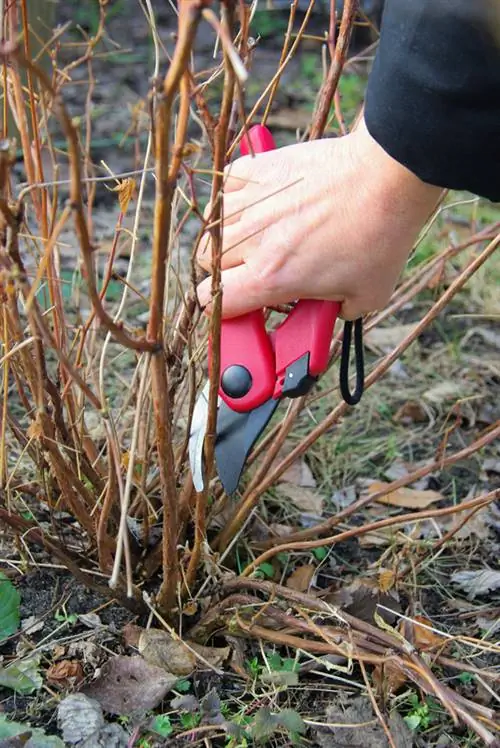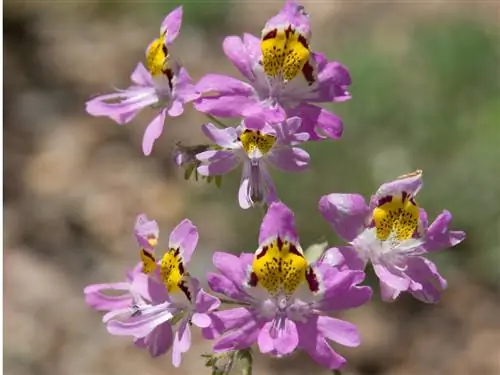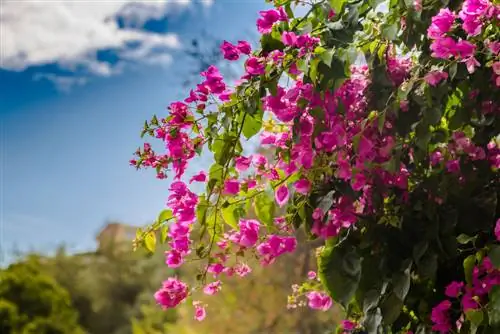- Author admin [email protected].
- Public 2023-12-16 16:46.
- Last modified 2025-01-23 11:20.
The question of when to cut which rose and how cannot be answered in one sentence. Most roses should be cleaned out after flowering to prevent the risk of invading pathogens. Roses are also usually cut back in early spring; unless they are single-flowering varieties.

How do I cut roses correctly in summer?
Pruning roses in summer means continually removing faded flowers. For roses that bloom in clusters, cut just below the spent umbel; for noble roses, cut above the first fully developed leaflet. Cutting tools should be disinfected regularly.
Cut once-blooming roses only after they have bloomed
When cutting roses, it is important to differentiate between once-blooming and frequently-blooming types. Shrub and climbing roses that bloom once only produce their flowers on two-year-old shoots, which is why roses in this category have a different pruning time than modern roses, which usually bloom more often. If you prune single-flowering types too hard in spring, a large part of the valuable flower wood would be lost. For this reason, you only cut them in the summer, directly after flowering. You only shorten the shoots slightly and also remove some wood from the center of the rose, i.e. H. They light them out. In this way, the young shoots are protected and the plant also has time to develop further shoots, which will then bloom vigorously the following year.
Pruning roses that bloom more often in spring
Most commercially available modern rose varieties are more frequent bloomers; This means that they bloom on the annual shoots and can therefore be cut in spring without any worries. When cutting, always pay attention to the eyes (buds) and always cut just above them, keeping the cut at a slight angle.
Cleaning roses in summer
Summer pruning of rose varieties that bloom more often is not a one-off action like rejuvenating pruning in spring. Instead, this is done continuously as regular removal of dead flowers. Types that bloom in clusters, such as bed roses or shrub roses, are cut out quite close to a spent umbel. For noble roses, which often only produce one flower per stem, it is best to look for the spot above the first fully developed leaflet. The first strong bud for new growth is located at this point.
Tip
Some diseases that occur on shoots and leaves can be transmitted from one plant to another using infected pruning tools such as rose scissors. In order to minimize the risk of such transmission and thus the infection of he althy roses, it can help to disinfect all pruning tools (€25.00 on Amazon) several times a year with denatured alcohol.






